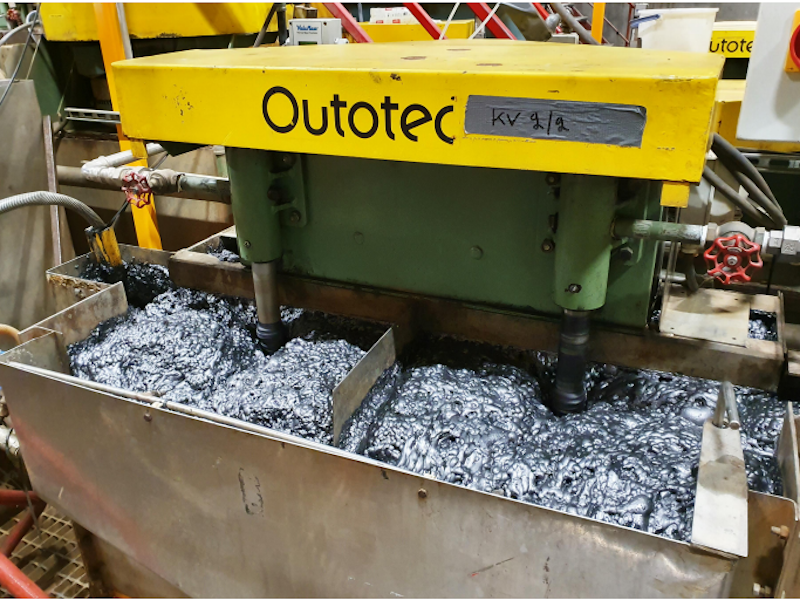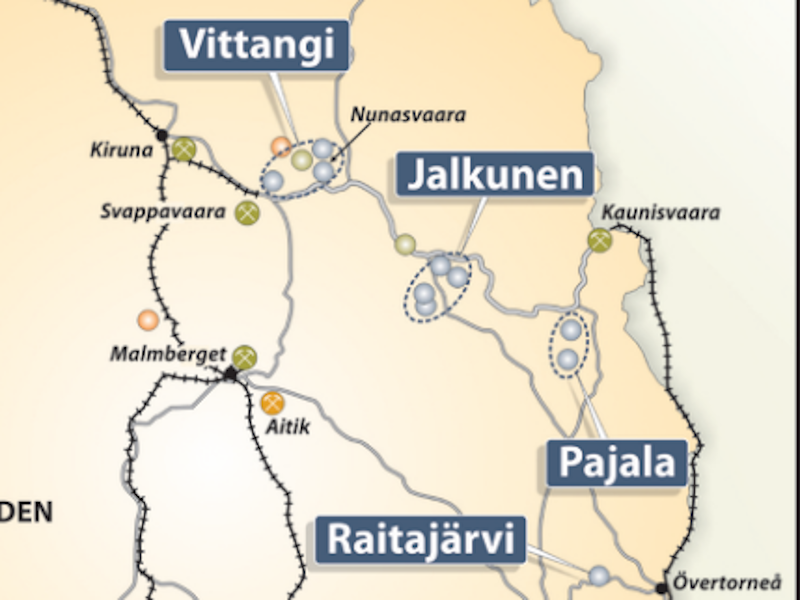The Vittangi graphite project located in Norrbotten County, Sweden hosts the Nunasvaara deposit, which is believed to be the highest-grade graphite deposit in the world.
Talga Resources, a technology materials company based in Australia, is the owner and operator of the project.
Planned to be developed in stages, the Vittangi graphite project will comprise an open-pit mine and an on-site concentrator facility.
The graphite concentrates from the project will feed Taiga’s planned anode refinery facility near the Port of Lulea for the production of high-performance lithium-ion battery graphite anode product.
Vittangi graphite project development
A pre-feasibility study (PFS) for the project was completed in April 2019. The stage one development of the project with an estimated capital expenditure of £21.2m ($27m) is expected to commence initial production in 2021.
Environmental permit for the stage one mining operation was granted by the Swedish authorities in March 2020.
The capital expenditure for stage two development of the project is estimated to be £137m ($174m).
The Vittangi graphite project is expected to produce up to 19,000 tonnes (t) of lithium-ion battery graphite anode material a year over an estimated mine life of 22 years.
Location, geology, and mineralisation
The Vittangi graphite project that covers more than 400km2 of permit area is located approximately 20km east of LKAB’s Kiruna iron ore mine and railhead at Svappavaara, in Norrbotten County, Sweden.
The Vittangi graphite project is based on the high-quality Nunasvaara graphite deposit which has been hailed as a mineral deposit of national interest by the Geological Survey of Sweden (SGU).
The bedrock geology of the project area is dominated by basalts, andesites, quartzite, schist, marble as well as metadolerites of the Vittangi Greenstone Group.
The Nunasvaara deposit consists of lithologically continuous, sub-vertical dark-grey to black graphite rock units measuring up to 30m-wide each.
Graphite is found evenly distributed in micro-crystalline forms at the Nunasvaara deposit.
Ore reserves at Vittangi graphite project
The proven and probable ore reserves for the Vittangi graphite project are estimated to be 1.9 million tonnes (Mt) grading 23.5% graphite.
The indicated and inferred resources are estimated to be 10.7Mt grading 25.7% graphite.
Mining and ore processing at Vittangi graphite project
The conventional open-pit mining method involving drill-blast-load-haul operations will be implemented for the Vittangi graphite project.
Mining will proceed from the south end of the deposit and progress northwards across five pits. The deepest part of the pit will reach 80m in stage two.
The extracted ore will be sent in 40 tonnes (t) articulated trucks to an on-site processing facility which will have an ore processing capacity of 100,000 tonnes per annum (tpa).
The run-of-the-mine (ROM) ore will undergo two-stage crushing, grinding, rougher and froth floatation, and thickening at the facility for the production of graphite concentrate that will be stored and sent in bags to Taiga’s proposed anode refinery facility at Lulea.
Infrastructure facilities
The existing local unsealed roads connecting the project site with highway E45 will be upgraded as part of the project. The E45 highway connects to the E10 highway that goes up to Lulea.
The electricity for the project will be supplied from the regional power grid through a new power line from Svappavaara to an on-site substation.
The raw water supply for the mine site will comprise groundwater recovery inflow, pit seepage, and recycling, while Hosiojarvi Lake will be the additional water source for the project.
Contractors involved
Golder Associates was engaged for ore reserve and mine design services during the PFS, while Core Resources provided process design and cost estimates.
AF Consult was engaged for infrastructure and construction planning services, while Swedish Geological was the socio-economic consultant.





